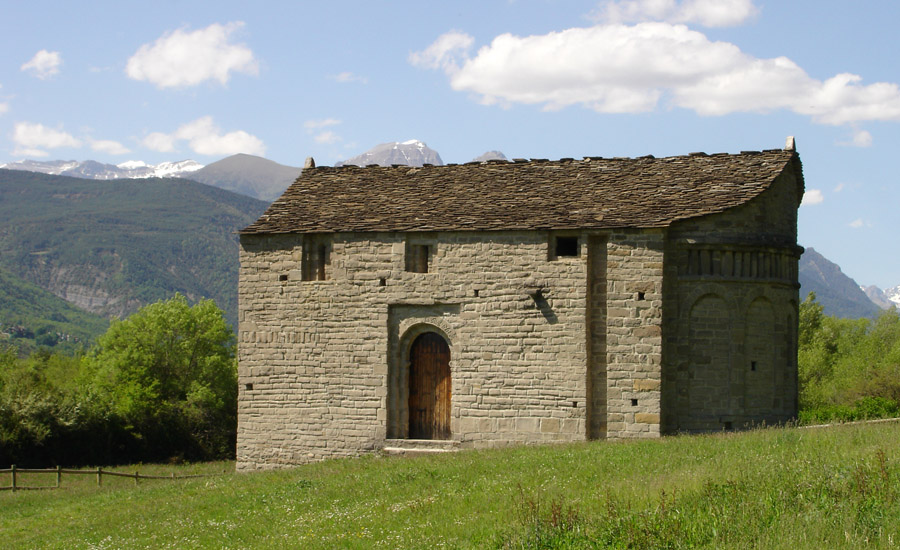SaintJohn’s, Busa – San Juan de Busa
SaintJohn’s, Busa – San Juan de Busa

LOCATION
- Locality: Oliván
- Where: Busa
- How to get there: From the A-136, you can get to the Church via the road to Oliván; from the N-330, on the outskirts of Sabiñánigo, you can get to the Church via the road from Lárrede.
- Signposting: Yes
- Spatial orientation: Between Larrade and Oliván
Standing in a field next to the spectacular riverbank woods of the River Gállego, between the villages of Oliván and Lárrede, is Saint John’s Shrine (10th/11th Century). It is one of the most picturesque of all the Serrablo Churches, its remarkable and unique form revealing an interior that has hardly changed since it was built. The Church is not complete, however: the vault of the apse was not finished and there is no bell tower. It is also the only church with carved decoration.
The nave is rectangular with asemi-circular apse. However, it is unusual as it is not covered by a semi dome; instead the roof of the nave continues on to cover the apse.
The apse is typical of the Serrablo group: a frieze of columns and five blind wall arches with a central window. The portal, in the south wall, consists of an alfiz framing a semi-circular arch, which surrounds a horseshoe arch. The outside arch is decorated with a garland and palmette border, and there is an inscription in Kufic characters, which is legible, praising God. The west wall has a triple window with horseshoe arches in an alfiz which is situated in a blind doorway.
The Church has been declared a Property of Cultural Interest (and a Historic/Artistic Monument since 1982).

